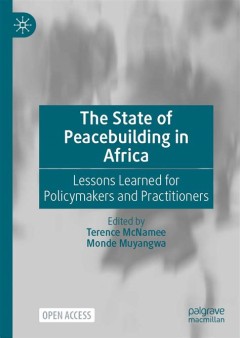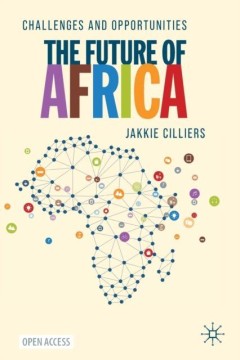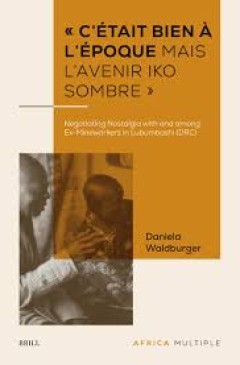Filter by

Islamic Ethics and the Trusteeship Paradigm: Taha Abderrahmane’s Philosophy…
Islamic Ethics and the Trusteeship Paradigm explores the emerging ethical theory of the trusteeship paradigm as developed by the Moroccan philosopher Taha Abderrahmane (b. 1944). The volume, with contributions in English and Arabic, examines the development of this modern Islamic theory of ethics and how it permeates various disciplines: philosophy, theology, legal theory, Sufism, moral theory,…
- Edition
- -
- ISBN/ISSN
- 978-90-04-43835-4
- Collation
- xviii, 364 pp.
- Series Title
- -
- Call Number
- -

East African Community Law Institutional, Substantive and Comparative EU Asp…
East African Community Law provides a comprehensive and open-access text book on EAC law. Written by leading experts, including the president of the EACJ, national judges, academics and practitioners, it provides the most complete overview to date of this increasingly important field. Uniquely, the book also provides a systematic comparison with EU law. EU companion chapters provide concise ove…
- Edition
- -
- ISBN/ISSN
- 978-90-04-32207-3
- Collation
- oer.unej.ac.id
- Series Title
- -
- Call Number
- -

Radio and Women's Empowerment in Francophone West Africa
The book examines the signifcant role played by radio in empowering women in three West African countries: Mali, Niger, and Burkina Faso. The choice of these three countries enables a fair comparison: all three face similar social, economic and political problems, share similar religious, traditional and cultural backgrounds and, most importantly for this book, all suffer from similar, part…
- Edition
- -
- ISBN/ISSN
- 9783031359859
- Collation
- XIII, 239
- Series Title
- -
- Call Number
- -

Colonial Survey and Native Landscapes in Rural South Africa, 1850 - 1913
In Colonial Survey and Native Landscapes in Rural South Africa, 1850 - 1913, Lindsay Frederick Braun explores the technical processes and struggles surrounding the creation and maintenance of boundaries and spaces in South Africa in the nineteenth and early twentieth centuries. The precision of surveyors and other colonial technicians lent these enterprises an illusion of irreproachable objecti…
- Edition
- -
- ISBN/ISSN
- 978-90-04-28229-2
- Collation
- oer.unej.ac.id
- Series Title
- 16 Oct 2014
- Call Number
- -

The State of Peacebuilding in Africa = Lessons Learned for Policymakers and P…
This open access book on the state of peacebuilding in Africa brings together the work of distinguished scholars, practitioners, and decision makers to reflect on key experiences and lessons learned in peacebuilding in Africa over the past half century. The core themes addressed by the contributors include conflict prevention, mediation, and management; post-conflict reconstruction, justice and…
- Edition
- 1
- ISBN/ISSN
- 9783030466367
- Collation
- XIX, 431 hlm; ill., lamp.,
- Series Title
- -
- Call Number
- -

The Future of Africa = Challenges and Opportunities
This open access textbook offers a critical introduction to human and economic development prospects in Africa revolving around three questions: where is Africa today, what explains the current state, and, given historical trends and what we know about the world, where do we think the continent will be in 2040? And, a final question: what can we do to create a better tomorrow? It models ambitio…
- Edition
- 1
- ISBN/ISSN
- 9783030465902
- Collation
- XVII, 421 hlm; ill., lamp.,
- Series Title
- -
- Call Number
- -

African Futures
The essays in this collection are written to make readers (re)consider what is possible in Africa. The essays shake the tree of received wisdom and received categories, and hone in on the complexities of life under ecological and economic constraints. Yet, throughout this volume, people do not emerge as victims, but rather as inventors, engineers, scientists, planners, writers, artists, and act…
- Edition
- Volume: 27
- ISBN/ISSN
- 9789004471641
- Collation
- -
- Series Title
- -
- Call Number
- -

Africa, the Cradle of Human Diversity: Cultural and Biological Approaches to …
This book explores important chapters of past and recent African history from a multidisciplinary perspective. It covers an extensive time range from the evolution of early humans to the complex cultural and genetic diversity of modern-day populations in Africa. Through a comprehensive list of chapters, the book focuses on different time-periods, geographic regions and cultural and biological a…
- Edition
- Volume: 26
- ISBN/ISSN
- 9789004500228
- Collation
- -
- Series Title
- -
- Call Number
- -

Data Collection in Fragile States : Innovations from Africa and Beyond
‘This open access book addresses an urgent issue on which little organized information exists. It reflects experience in Africa but is highly relevant to other fragile states as well.’ —Constantine Michalopoulos, John Hopkins University, USA and former Director of Economic Policy and Co-ordination at the World Bank Fragile countries face a triple data challenge. Up-to-date information…
- Edition
- 1
- ISBN/ISSN
- 9783030251208
- Collation
- XXXI, 243 hlm; ill., lamp.,
- Series Title
- -
- Call Number
- -

« C’était bien à l’époque mais l’avenir iko sombre »: Negotiating …
Why do former mineworkers in Lubumbashi (DRC) remember exploitative working conditions and measures to control their private lives with nostalgia? Building on their 'objects of loss', this book answers this question, foregrounding the voice of so-called 'Départs Volontaires’. The study combines linguistics, anthropology, and archives research to explore what ex-mineworkers regard as material…
- Edition
- Volume 5
- ISBN/ISSN
- 978-90-04-72490-7
- Collation
- -
- Series Title
- -
- Call Number
- -
 Computer Science, Information & General Works
Computer Science, Information & General Works  Philosophy & Psychology
Philosophy & Psychology  Religion
Religion  Social Sciences
Social Sciences  Language
Language  Pure Science
Pure Science  Applied Sciences
Applied Sciences  Art & Recreation
Art & Recreation  Literature
Literature  History & Geography
History & Geography